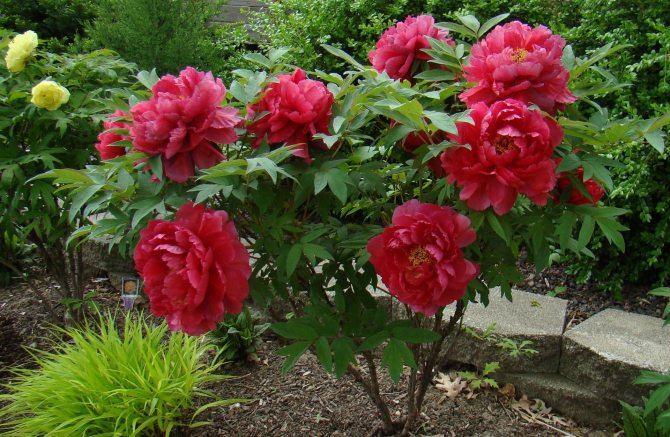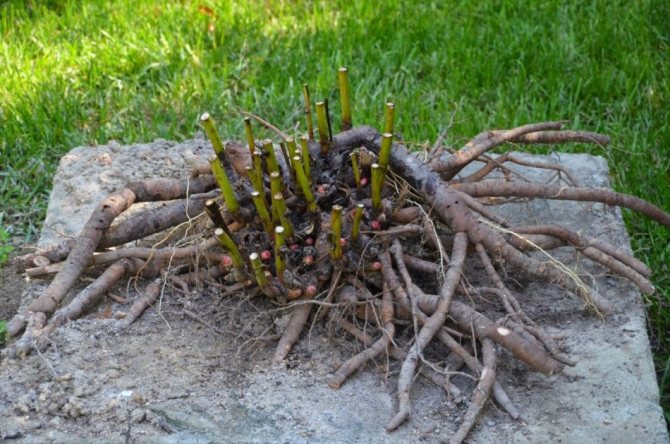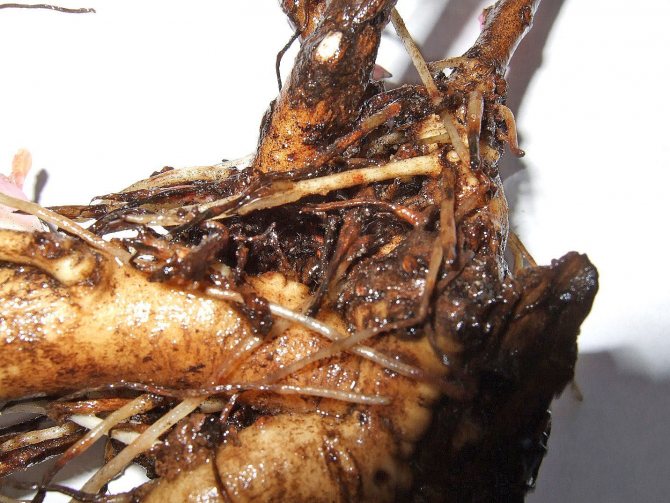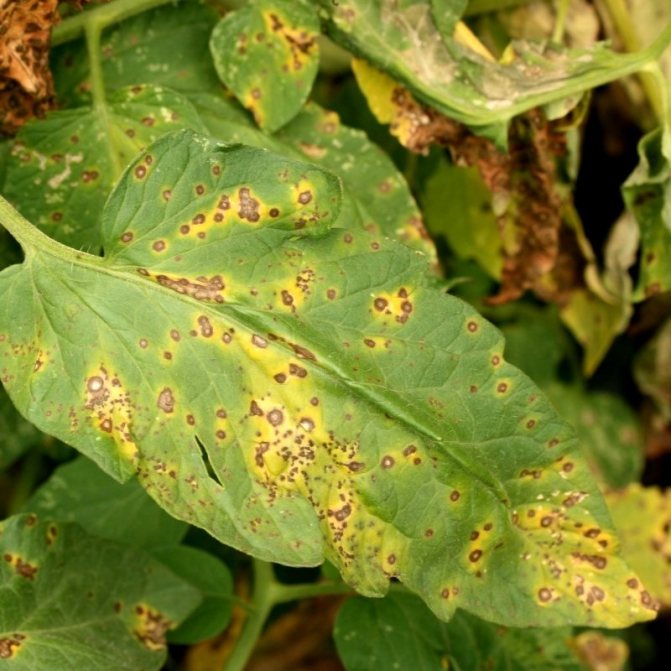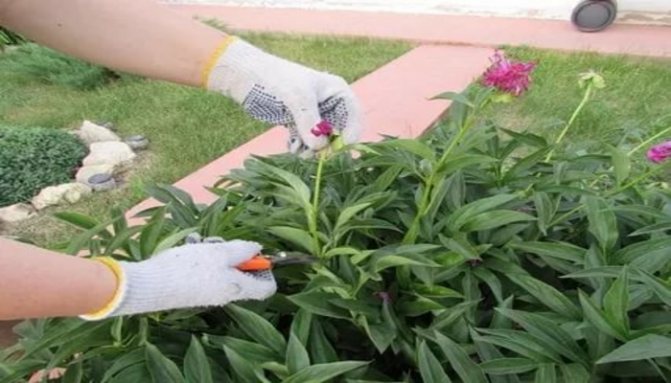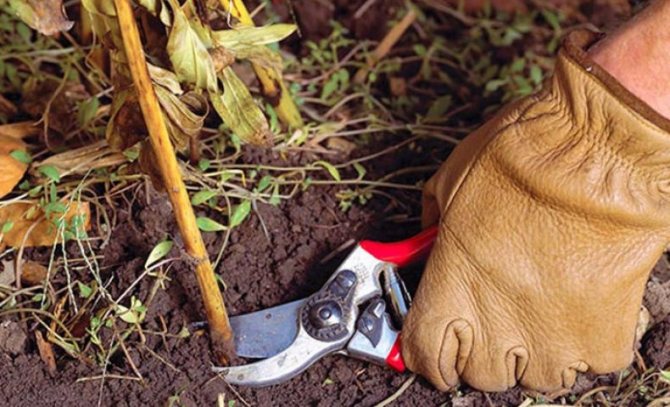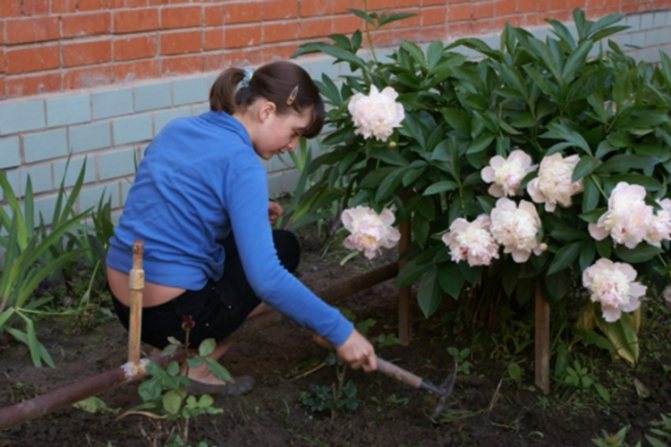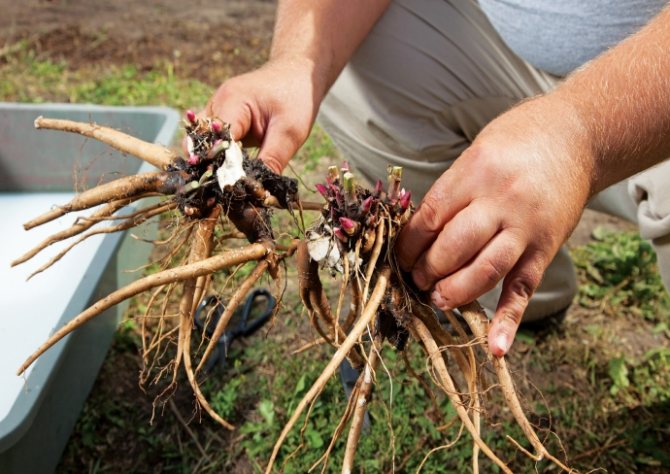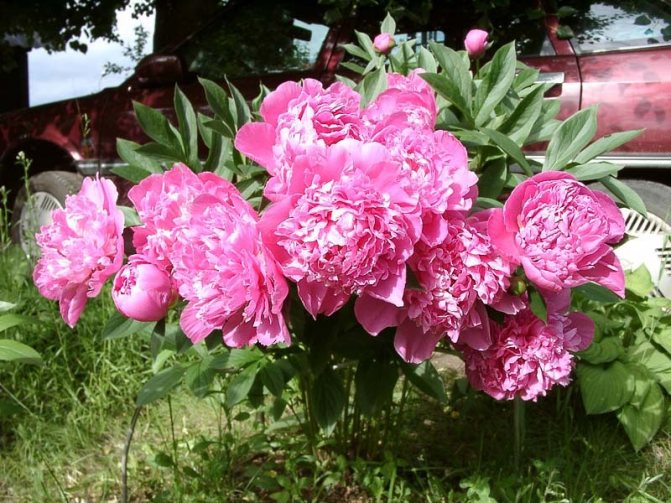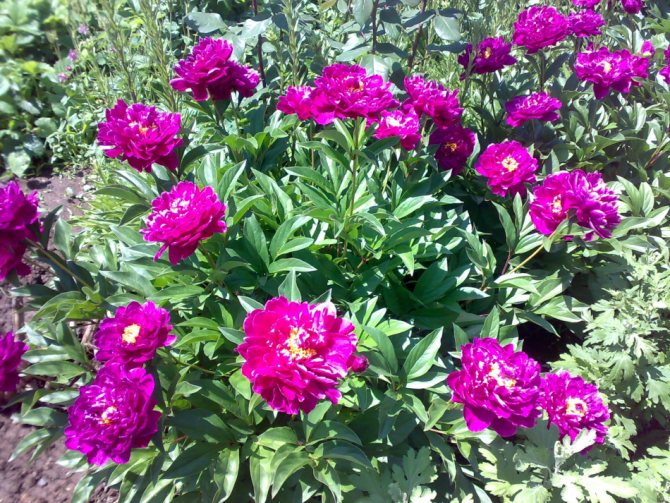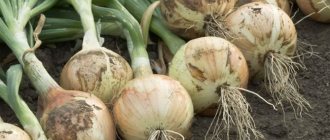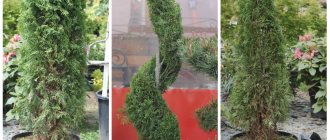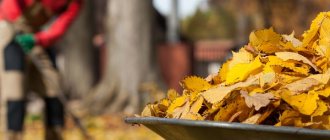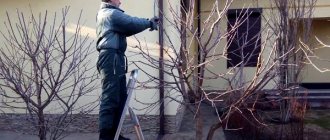Novice growers often ask the question, peonies have faded - what to do next. Tips from experienced gardeners on how to care for flowers after flowering to avoid growing errors.
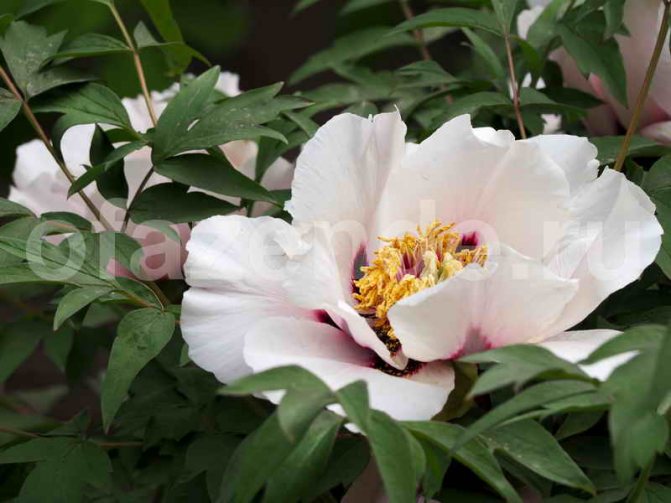
Growing peonies. Illustration for this article is used under a standard license <627
Do I need to trim
Peonies should be pruned 2 times: after flowering and in autumn. In the first case, you need to wait until all the inflorescences have faded. If you take your time with the procedure, more beautiful flowers will appear next year. Exceptions are the need to grow seeds or increase the size of the inflorescence. It will be possible to get seed material only after waiting for the bolls to fully ripen. For growing large buds - leave 2-3 top flowers.
Autumn pruning of peonies is also required so that plants in winter do not waste energy on the aerial part instead of developing the root system. Another reason is diseases of a fungal and bacterial nature, often affecting the leaves in the fall. The need and rules for pruning depends on the type and variety.
Dates of the procedure
Dried flowers can be removed after the bush has completely faded. Often the procedure is carried out at the end of June, July. In the fall, postpone the pruning of peonies until a cold snap. An external sign of the readiness of the plant is the lowering of the branches to the ground, dried, withered leaves. This indicates the end of physiological processes, readiness to spend the winter without negative environmental impact. In case of infection with infections, preparation for winter should be carried out earlier by treating the cut sites and the soil around with a fungicide solution.
Novice growers prune peonies already in August. This cannot be done.
The root system still needs nutrients from photosynthesis. The optimal time for most regions is late October or early November. You can even wait for the first autumn frosts at night.
Stage 3 - loosening the soil
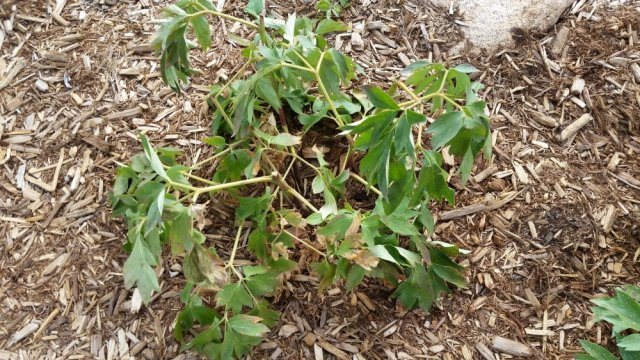

This simple plant maintenance technique should not be neglected. Heavy rain or watering causes a crust to form on the surface of the soil, and this prevents air from reaching the depths. In this case, loosening will help. This will also save the peony from unwanted neighbors - weeds.
To make your life easier, the soil around the peony can be mulched. Mowed grass, sawdust, and humus are also suitable as mulch.
Cutting technology
Stems with dried flowers should not be cut off completely, but leaving 2-3 leaves on the shoot. Remove the remainder along with the rest of the shoots. It is important to consider the type of peony - herbaceous or tree-like. Pruning before winter must be carried out correctly, taking into account agrotechnical recommendations and varietal characteristics.
- preparation of tools;
- removal of twigs;
- cleaning and burning of plant residues;
- top dressing;
- insulation before winter.
Gardening tools must be processed before use so that pathogenic infections from other crops do not penetrate through the cut sites. It is enough to wash and wipe with alcohol.
The remote aboveground part of peonies is a carrier of pathogens, and can also serve as a home for rodents and insect larvae.For this reason, it cannot be used for warming the root system before winter, or added to compost. The cut branches must be removed from the site, dried and burned.
As top dressing, use mineral complexes containing phosphorus and potassium, which are required for the development of roots. Nitrogen should not be added, since it causes active growth of the aerial part. Compost and rotted humus can be added closer to frost, because they are nitrogen-containing additives. Peonies love bone meal; in preparation for winter, 1 glass can be added under each bush. Wood ash is used as a fertilizer, a protective agent against diseases, it is required to sprinkle it on the surface of the ground and on cuts. Autumn top dressing will help to transfer pruning more easily, promotes the renewal of the root system.
Peonies are frost-resistant plants that can withstand temperatures down to -15… -34 ° C. At the same time, experienced gardeners recommend insulating the bushes in regions with cold winters, as well as in the absence of snow. After pruning herbaceous varieties, you can pour a layer of peat, sawdust, compost or cover with spruce branches. For tree-like ones, you will have to cover the soil surface with peat, build a hut of coniferous twigs on the remaining shoots, wrap it with twine. Cover with foil to protect against moisture, leaving air vents. Hybrids are most susceptible to freezing.
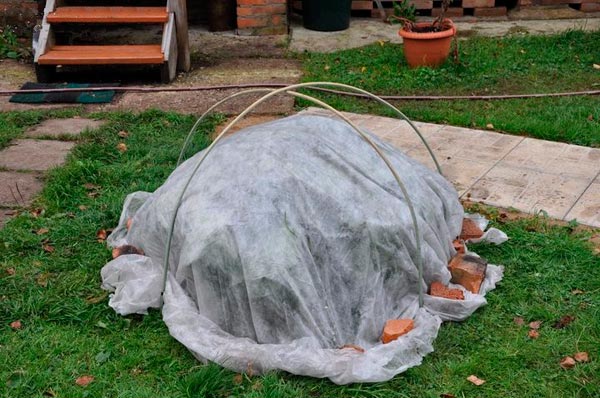

Herbaceous
Cut off the branches of these varieties of peonies should be almost at the root. It is permissible to leave stumps with a height of 1-2 cm, but not more. The tool must be sharp, pre-disinfected, without residues of earth and other plants. An infection can get into the bush through the cut site, which will lead to its death.
After pruning, before winter, scatter fertilizers over the soil surface and loosen, mixing the additive with the top layer of soil. It is allowed to sprinkle the hemp obtained as a result of the procedure with earth, mulch. The main thing is not to forget to remove excess shelter in the spring.
Tree-like
Novice gardeners sometimes prune peonies too hard, removing the skeletal branches. This should not be done, since there will be no flowering for the first two years after that. Treelike varieties form or rejuvenate before winter. To give a decorative shape, it is allowed to leave stems with a height of 70-90 cm. In the spring, many new shoots will appear. The second type of pruning is allowed to be carried out no more than 1 time in 10 years. The need for it is noticeable by the deterioration of growth and flowering.
The technology for pruning tree-like peonies must not be violated. In normal preparation, the lignified skeleton should be left before winter, removing only the leaves.
In the spring, the procedure is repeated. This time cut off shoots without buds, dried, broken twigs. For the purpose of rejuvenation, all healthy stems are shortened to the first bud.
Peonies need to be prepared for winter. Pruning is carried out in the fall in accordance with the varietal characteristics of the plant. It is important to disinfect working tools; after the procedure, the bushes should be fed and protected from frost. Cut branches cannot be used as insulation.
In early summer, peonies are considered one of the most remarkable and vibrant flowers in the garden. Spectacular lush buds of different shades, a unique fresh aroma and lush greenery overshadow most of the neighbors in the flower garden for the entire flowering period. Such beauty is possible only with a competent integrated approach to the cultivation of garden plants.
Responsible attitude to nature and proper care is the key to the full development of flower crops. One of the must-have care items is pruning peonies. The quality and duration of future flowering depends on its competent and timely implementation.


Both herbaceous and tree-like varieties of peonies are recommended to be pruned three times a season - in early spring, after flowering and before winter.Each of these procedures has its own goals, which ultimately lead to one thing - to improve the health of peonies and its longevity.
Stage 2 - watering


Peonies need moist soil to plant flower buds. However, many gardeners after flowering plants immediately stop watering them. You shouldn't do this, because the flower in this case will experience stress, which will lead to the formation of weakened buds. Because of this, next year the peony will not be able to please you with lush flowering. Watering is especially important if the summer is dry. The amount of water should be reduced gradually. If you poured, for example, 25 liters under a flowering bush, then after flowering, begin to reduce this volume. First, reduce the dose to 15 liters, then to 10 liters, etc. until complete cessation.
When to prune peonies after flowering in summer
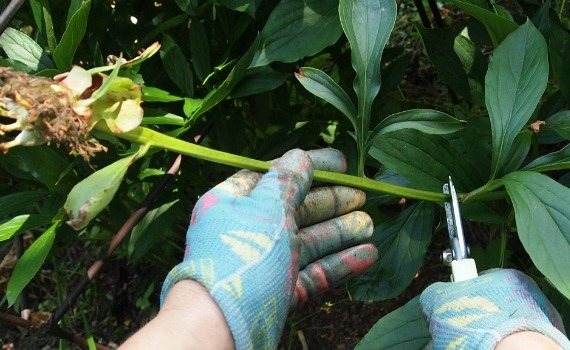

Timing of pruning peonies in the summer
For each individual flower bush, the pruning time is determined individually. The signal to start it will be the complete end of flowering, the absence of buds and inflorescences on the plant. They should bloom and crumble or wither naturally so that only bare flower heads remain on the crops.
Top dressing of peonies in autumn


After active growth and flowering, by autumn the root system of peonies is greatly weakened. Namely, at this time, the formation of growth points and roots begins. In order for new roots to successfully form and the plant to enter the winter prepared, it must be fed.
The root system of peonies accumulates minerals and nutrients in the fall, for the active growth of the bush in the spring and the formation of large inflorescences.
In autumn, it is best to feed peonies from mid-September to mid-October, 1-1.5 months before pruning and the first frost. It is at this time that the peony bush is most actively accumulating strength and nutrients.
When and how to prune peonies for the winter
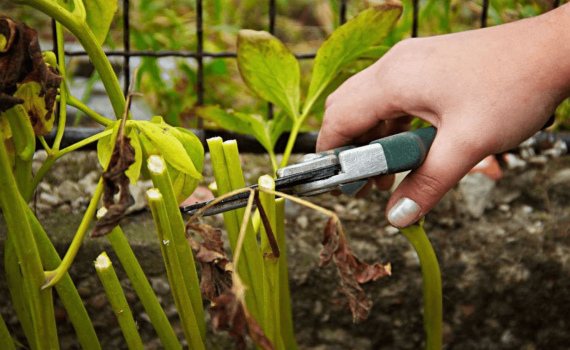

Autumn terms of pruning peonies
The autumn season is considered the best time to prepare peonies for winter and pruning before winter. Most species and varieties remain in lush greenery until the first frost in October. Only crops affected by pests or diseases wither and wither. This can happen as early as August or September.
It is important that it is during this period that the root part continues to restore the deficiency of nutrients and pruning at the root is strictly prohibited. Pruning a bush during these months will not only weaken the peony's immunity, introduce it into a stressful state, but can also lead to the death of the entire plant.
There are several signs - signals that indicate that it is time to prune:
- all stems fall to the ground;
- the stems are colored brown;
- the leaf mass begins to fade gradually.
The optimal time for pruning the bush at the root is from October 15 to November 10, but in different climatic conditions this period can shift to one side or the other. If we focus on temperature indicators, then the average air temperature should be in the range of five to seven degrees Celsius.
Rules and technology
Autumn pruning technology includes several mandatory points:
- disinfection of garden tools before and after the procedure with an alcohol or manganese solution;
- cutting off the aerial part of the bush;
- immediate removal of trimmed parts of plants from the garden area and their complete destruction (after drying) away from the flower garden;
- watering and fertilizing and fertilizing;
- applying a mulch layer as insulation for the winter.
The opinions of experienced gardeners on the height of the stumps remaining after pruning at the root differ.Some recommend leaving a height of one to two centimeters, others - from three to five centimeters, and still others generally advise cutting off the stems to the level of the ground surface (without stumps).
Important! It is necessary to carry out the pruning procedure only with a sharp and sterile clean instrument in order to avoid introducing various infections into the places where the stems are cut. The further development and life of the flower bush will depend on this.
How to process peonies after pruning


After removing the aerial part of the peonies, it is recommended to moisten the soil abundantly and add nutrient solutions or dry mixtures. There are several options for mineral and organic fertilizing.
- A thick layer of compost or rotted humus (about one large bucket for each plant) is applied to the bush and around it in a circle in the second half of November (with the arrival of frost).
- Immediately after cutting, the cut sites are sprinkled with wood ash powder or crushed activated carbon (for disinfection), and later one large glass of bone meal is added under each plant.
- Complex mineral fertilizers for flowering horticultural crops containing potassium and phosphorus are scattered over the surface of the ground near each bush in the dosage indicated on the package.
Features of pruning a tree peony


- Sanitary, anti-aging and decorative pruning of the tree peony is recommended only in spring.
- A sanitary "haircut" should be done every year. It involves the removal of dry branches completely and frozen ones - to a living bud.
- Plants require a rejuvenating procedure after fifteen to twenty years. The branches are cut at the root, which activates the growth of new shoots and gives new strength for further development.
- The shaping "haircut" is carried out for the first time only in the third or fourth year of life. Remove dry, damaged, weak and thickening shoots.
- To enhance the growth and size of the inflorescences, for a more lush and abundant flowering, a certain number of small buds should be pruned.
- Annual autumn pruning of a tree-like peony (under the root) is not carried out, since their thick and strong tree-like stems are not afraid of winter frosts and perfectly tolerate cold periods. But the unviable old branches must be shortened by ten to fifteen centimeters.
- After the end of flowering, it is necessary to remove only faded buds, and in the autumn, ripe seed pods are cut off.
- For the full development of a tree peony, it is recommended to cut off the root growth annually.
Peony care in autumn
And what should you do in the fall, when your peony bush is actively preparing for winter?
In the fall, it is advised to perform the following peony care measures:
- Loosening the soil, no deeper than 5 cm within a radius of 50 cm, so as not to damage the roots.
- Mulch the soil around the bushes.
- Remove fallen and dry leaves, petals, faded flowers and buds, for the prevention of fungal diseases
- Carry out autumn pruning of the bushes - it is advisable to do this as late as possible.
- Shoots and leaves in the fall are cut as close to the ground as possible and burned.
- Feed the peony bushes.
- If a transplant or division is required, autumn is the best time to do this.
- Abundant watering in late autumn promotes good wintering.
When can peonies be transplanted after flowering
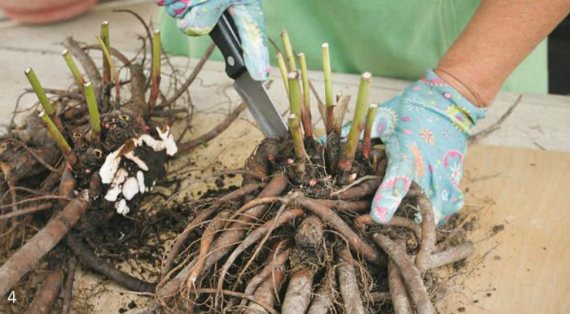

After intensive flowering, the peonies are allowed to rest until the end of summer, and then (if necessary) they are transplanted. A favorable time for this is the second half of August and September. Depending on the local climate, these terms can be shifted by one to two weeks. Before the cold weather, the plants will have time to take root in a new place and get stronger in order to survive the winter.
There may be several reasons and signs for transplanting: a rather large overgrown bush, spots appearing on leaf plates, yellowing and drying leaves in the lower part of the bush, signs of disease, more than five years old.
Basic transplant rules:
- With a garden pitchfork, the bush is carefully dug in at a distance of twenty centimeters from the root, after moistening the soil.
- Prying with a shovel and holding on to the aboveground part, the bush is removed from the soil along with an earthen lump.
- The aboveground part is cut off by 60 - 70%.
- The soil on the roots is lightly shaken off, then the roots are washed, examined, separated, and lifeless roots are removed.
- Each divided part should have one or two buds.
- Places of root cuts are sprinkled with ash or treated with a solution of potassium permanganate.
- A drainage layer (from wood waste, small stones, broken brick) and a mixture of garden or garden soil, humus, compost, and a mineral complex are poured into the planting pit.
- Delenki are planted, sprinkled with earth, tamped and watered.
How to transplant correctly
The most favorable time for transplanting peonies is early autumn. In order to successfully plant peonies, you need to consider the following points:
- The underground part of the bush is very large, so the transplant hole must be at least 50-60 centimeters deep;
- Transplanting begins with pruning the bush, leaving only 1/3 percent;
- Dig in the bush carefully at a distance of 20 centimeters from the roots. The herbaceous peony should be dug up and pulled out with a pitchfork;
- Picking peonies after flowering;
- Having dug up the roots, the plant is left in the shade for 3-4 hours. The fleshy roots are shortened to 15–20 centimeters. All unhealthy and rotten ones are removed, and the remaining healthy roots are divided into a certain number of parts, so that at least 5-6 buds fall on any part. Divide the bush in half with a sharp wooden tool. Healthy roots are shaken off the ground and left for 2-3 hours in the open air;
- The roots, divided into parts, are planted in holes prepared for this in advance, since the earth should settle. Make sure that the upper part is at a depth of at least 5 centimeters. But it is by no means possible to deepen their rhizomes, otherwise the peonies will not turn green and, among other things, have every chance of disappearing. Peonies are planted, keeping a distance of 1 meter from each other.
- The base with a circle of transplanted peonies is not rammed in any way, so as not to destroy the buds;
- Peonies are watered and humus is added;
- If necessary, peonies are allowed to be transplanted in spring, but this has a bad effect on the plant - it becomes weak and does not bloom enough.
These are all important points to consider when transplanting this flower!
Gardening tips
- After splitting the root part and replanting, it is not recommended to water the plants abundantly for the next few months. A young plant absorbs moisture too quickly and, with its excess, the root part will begin to rot.
- After dividing an adult bush into parts, it is not recommended to plant plants in the same area. High-quality development of young crops - a deal is possible only in a new flower garden or flower bed.
- Peonies are very fond of water and in large quantities, but they absolutely cannot stand wet or swampy soil. To prevent water from stagnating, it is necessary to fill the planting hole with reliable drainage material before planting.
- Planting depth is of great importance for the growth and development of a peony. Insufficient depth can lead to the fact that after numerous loosening of the near-trunk space and weeding of weeds, the buds and part of the rhizome will be very close to the soil surface. Additional hilling can save such bushes. Planting too deep will result in no flowering.
- Renewal buds when planting peonies should not be deeper than five to seven centimeters in the ground.
- For planting peonies on your site, it is recommended to use only young plants - seedlings. Massive, overgrown and old cultures in a couple of years will become completely old and stop blooming.All the hassle of planting and leaving will be in vain.
- Without special need, do not disturb peonies with frequent transplants.
- The root damaged during transplantation must be disinfected with a solution of copper sulfate, manganese solution or sprinkled with crushed activated carbon.
- Early pruning of peony foliage (immediately after flowering ends) will cause irreparable harm to crops. The next bloom will be sparse or may not occur at all.
Mistakes when preparing peonies for winter
The main mistakes when preparing peonies for winter:
- too early pruning, before the onset of the first frost - the process of formation of renewal buds is disrupted;
- do not immediately remove withered foliage and cut shoots - buds and buds are affected by fungal diseases;
- insufficient nutrients in the soil - there will be few buds;
- with an excess of nitrogen, shoots may be without buds;
- do not properly cover peonies for the winter.
Planting depth of peonies
When planting a peony, do not deepen the buds of plant growth, otherwise you will not get a lush flowering. Correct Depth - Growth points should be 3-5 cm below the soil surface.
- if the peony is planted incorrectly, you need to transplant it in the fall
- the peony is not planted deeply - the bush suffers from frost in the spring
- the bush is planted very deeply, many shoots are formed, but few buds.
Disease prevention in autumn
Prevention of fungal diseases of peonies in the fall after leaf fall consists in treatment with copper sulfate (3-4%) or Bordeaux mixture (2-3%).
And to increase the resistance of the peony to diseases, it is recommended to use phosphorus-potassium fertilizers and trace elements, while excluding excess nitrogen. Preparations must be alternated.
Useful video
How to transplant peonies correctly - video
Peonies have faded - what to do? florist errors - video
Even in the presence of all conditions of maintenance and care, namely watering, fertilizing, loosening, weeding, replanting, without proper pruning, peonies will not delight with their beauty and fragrance. Only timely pruning, and so necessary for flowers, will prepare them for changes in weather, strengthen immunity, give strength and health to lay new buds and ensure lush, abundant and long flowering in the next season. A minimum of care and attention to their pets and they will surely thank the flower growers, become the subject of their pride and admiration.





